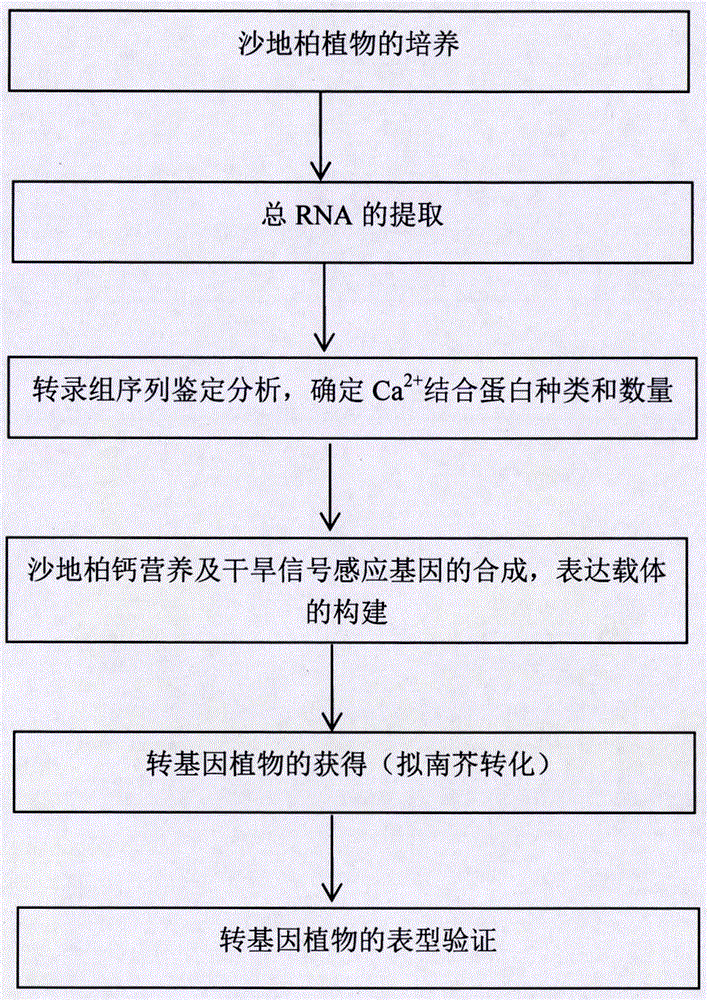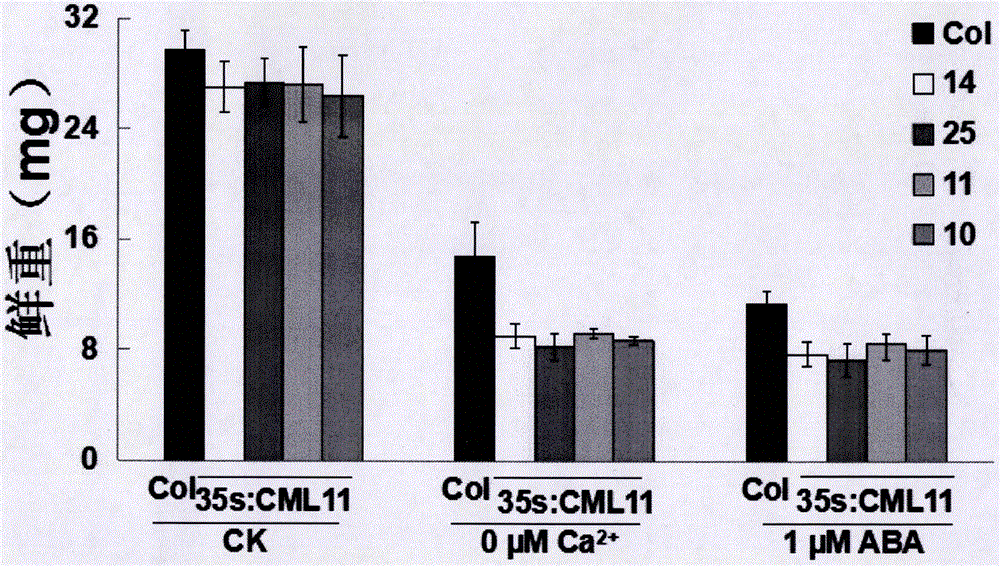Sensing gene CML11 capable of adjusting plant calcium nutrient and drought signal from Sabina vulgaris and application thereof
A technology for signal sensing and plant calcium, applied in the field of plant biology
- Summary
- Abstract
- Description
- Claims
- Application Information
AI Technical Summary
Problems solved by technology
Method used
Image
Examples
Embodiment 1
[0024] Embodiment 1, Cypress sativa sample collection
[0025] In order to maximize the abundance of RNAs related to stress resistance in the body, we chose to sample the cypress roots in relatively cold December (2013), and the samples were quickly stored in liquid nitrogen for future use after collection.
Embodiment 2
[0026] Embodiment 2, the construction of expression vector
[0027] 1. Since the RNA of cypress plants is difficult to extract, our target gene was synthesized by Nanjing GenScript, and the subsequent expression vector was constructed using the gene synthesized by the company. The cloning vector used for the synthetic gene was pUC57-Simple, and the resistance was Amp.
[0028] 2. The completion of the connection and construction of the target carrier
[0029] The expression vector used in the present invention is pOREE3, and its resistance is Kan.
[0030] The connection of the target vector is to simultaneously undergo 5': BamH I 3': Kpn I digestion of the synthesized gene fragment and the target vector, recover from DNA gel, connect with DNA ligase, and then transform Escherichia coli, undergo colony PCR and The method of extracting the plasmid, restriction restriction verification, and finally obtaining the plasmid connected to the vector gene.
[0031] Double enzyme dig...
Embodiment 3
[0073] Embodiment 3, the acquisition of transgenic plants
[0074] In this example, the tidbit infection method is used to obtain the transgenic plant code CML11
[0075] 1. Pick the Agrobacterium that has been properly sterilized for activation (the purpose of activation is to ensure the vitality of the bacteria), and add the activated bacteria to 5ml LB culture solution containing antibiotics (Rif50mg / ml and Kan 50mg / ml), at 28°C Cultivate overnight on a shaking table, put the shaken bacterial solution into a centrifuge, 5000×g, 10min, discard the supernatant, add 1ml of infection solution (5% sucrose, 0.02% silwet77 suspension dissolved in water), Blow gently with a dropper to suspend the bacteria.
[0076] 2. Select three boxes of wild-type Col-0 plants that are growing well and have bloomed, cut off the pods that have formed on the plants and the flower buds that have completed pollination, and use a rubber dropper to suck the bacteria liquid and drop it on the flower bu...
PUM
 Login to View More
Login to View More Abstract
Description
Claims
Application Information
 Login to View More
Login to View More - R&D
- Intellectual Property
- Life Sciences
- Materials
- Tech Scout
- Unparalleled Data Quality
- Higher Quality Content
- 60% Fewer Hallucinations
Browse by: Latest US Patents, China's latest patents, Technical Efficacy Thesaurus, Application Domain, Technology Topic, Popular Technical Reports.
© 2025 PatSnap. All rights reserved.Legal|Privacy policy|Modern Slavery Act Transparency Statement|Sitemap|About US| Contact US: help@patsnap.com



